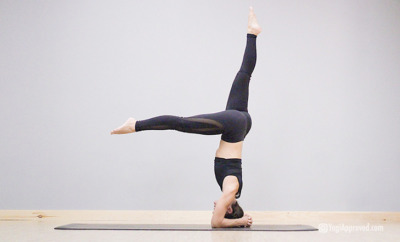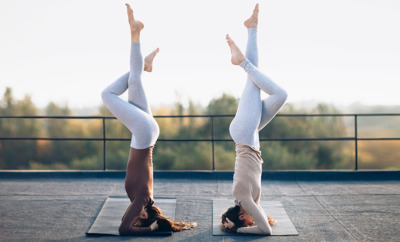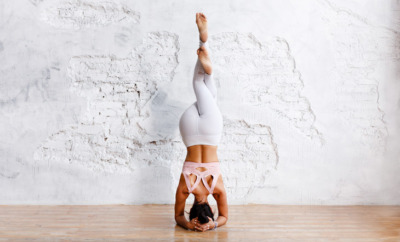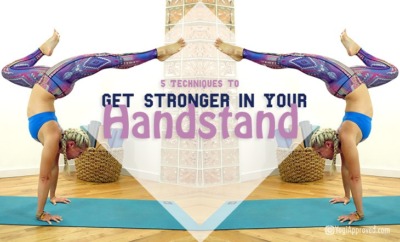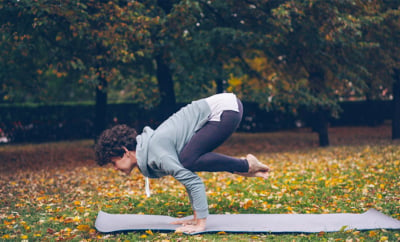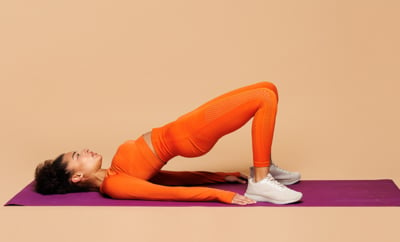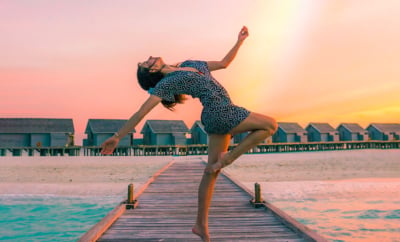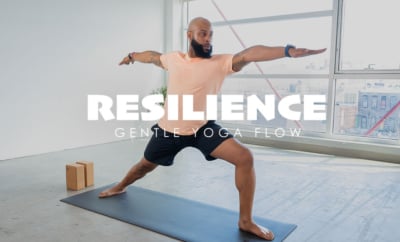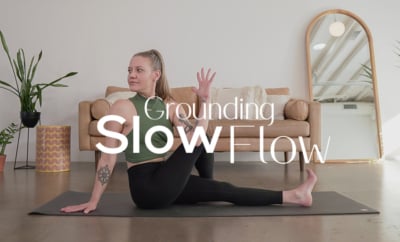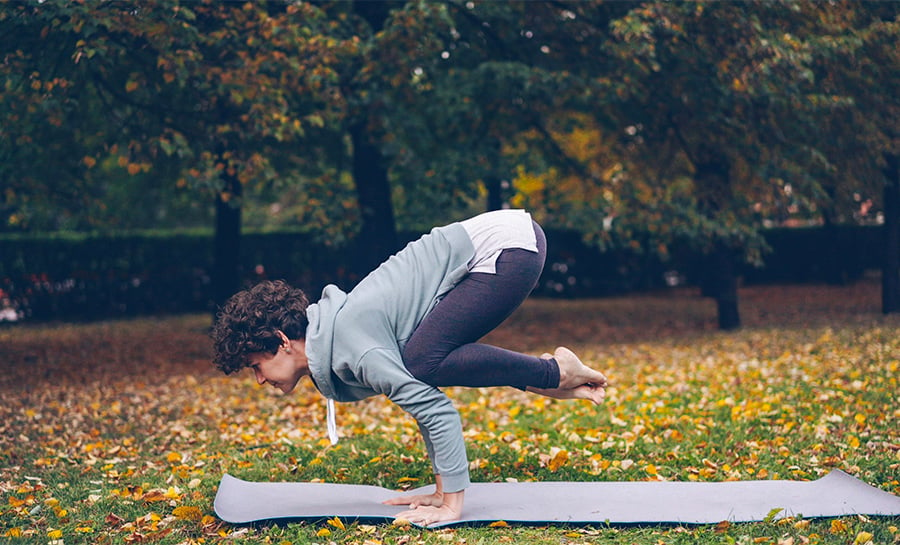You May Be Hurting Your Neck in Shoulderstand (Here’s How to Fix It)

hurting your neck in shoulderstand
Salamba sarvangasana (supported shoulderstand) is known as the “queen of yoga postures.” It is one of the most popular poses practiced globally, and is found in all types of yoga, due to its broad range of benefits.
Practicing shoulderstand calms the nervous system, decreases varicose veins, stimulates the throat chakra (aiding in clear communication), reduces wrinkles and aids in restful sleep. Yet amidst all the reasons to practice this pose regularly, it is extremely important to note that it has risk factors if not done properly that most practitioners (and teachers) are not aware of.
Although his book Light on Yoga pictures BKS Iyengar not using props, his style of teaching evolved, and now Iyengar Yoga is known for always using props and blankets. In Iyengar’s early years, his students started having neck issues like arthritis and degenerative disc disease from practicing shoulderstand on a flat surface. This prompted him to support the neck with blankets to keep the natural curve of the spine.
The cervical spine (neck) has a lordotic curve, which means the neck’s natural curve is inward. When you practice shoulderstand on the floor without support of the neck, you are literally flattening this area and imposing extreme flexion (or bending) on the cervical spine. It is very dangerous to lengthen these muscles to this extreme, in addition to bearing your full body’s weight on this area of your spine.
There is also a major artery in your neck called the carotid artery that is located in the front of your neck that flows from your heart and leads to your brain. When this is cut off, it stops oxygen flowing to your brain which could lead to strokes, loss of sight and even degenerative disc disease.
This is why it is important to elevate your shoulders and arms on a stack of yoga blankets while your head rests on the floor. This modification accomplishes two things:
It keeps the neck from flexing past 75 degrees (the maximum angle that most cervical spines are able to bend forward), and it keeps the weight of the body off the fragile cervical vertebrae.
It also allows you to place the proper weight in your shoulders and bring the weight completely out of your neck.
To set up for supported shoulderstand, you will need:
3 Mexican Yoga Blankets (this article will be referring to the traditional Mexican Yoga Blankets but you can substitute normal blankets at home) and 1 Yoga Mat
- Fold the blankets into rectangles (measuring about 1 foot by 2 feet), and stack them evenly on top of each other all facing the same way
- Place the blankets on top of your mat as shown in the photo
- Fold the bottom edge of your mat over the blankets (where the frills are) and leave about 2 inches of bare blanket for your neck so it does not stick to the mat

*The reason you fold your mat over the blankets instead of laying on them is to prevent your elbows and upper arms from slipping.
How to get into supported shoulderstand using blankets:
- Lay on top of the stacked blankets, and place your shoulders at the edge of the folded blankets
- The back of your head should be on the floor
- Drape your arms down alongside your torso
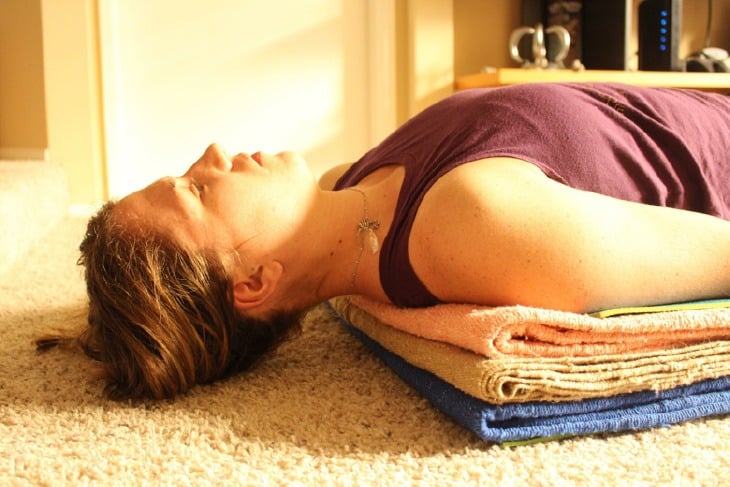
- Once your base is stable, start lifting one leg in the air, followed by the other leg
- Start walking your elbows close to each other and walk your hands up your spine (toward your head)
- Slowly begin to bring your legs up overhead, lowering them down towards the floor beyond your head
- There should be ZERO weight in your neck

- All the weight should be in your shoulders, which are supported on the blankets
- There is a natural curve in your neck
- There should still be ZERO weight in your neck
Shoulderstand has so many amazing benefits. When you are in shoulderstand, your blood pools around your lungs, oxygenating your blood, which reduces the “ageing” process. This posture has healing benefits and supports digestion, weight loss, cooling and is even known to help with PTSD patients.
Despite my serious warnings, I strongly recommend practicing this posture. Don’t be afraid of injuring yourself – simply provide your neck the support it needs by following the above guidance. Bringing support to this posture only increases the benefits while reducing the risk factors.
As with any yoga pose, practice it safely, correctly, and at your own pace, making any necessary modifications to ensure a successful yoga practice. Any questions, comments, or concerns? I’m happy to provide further feedback in the comments below!


This Month's Letter
From the Editor
Monthly motivation and food for
thought from our founder.


